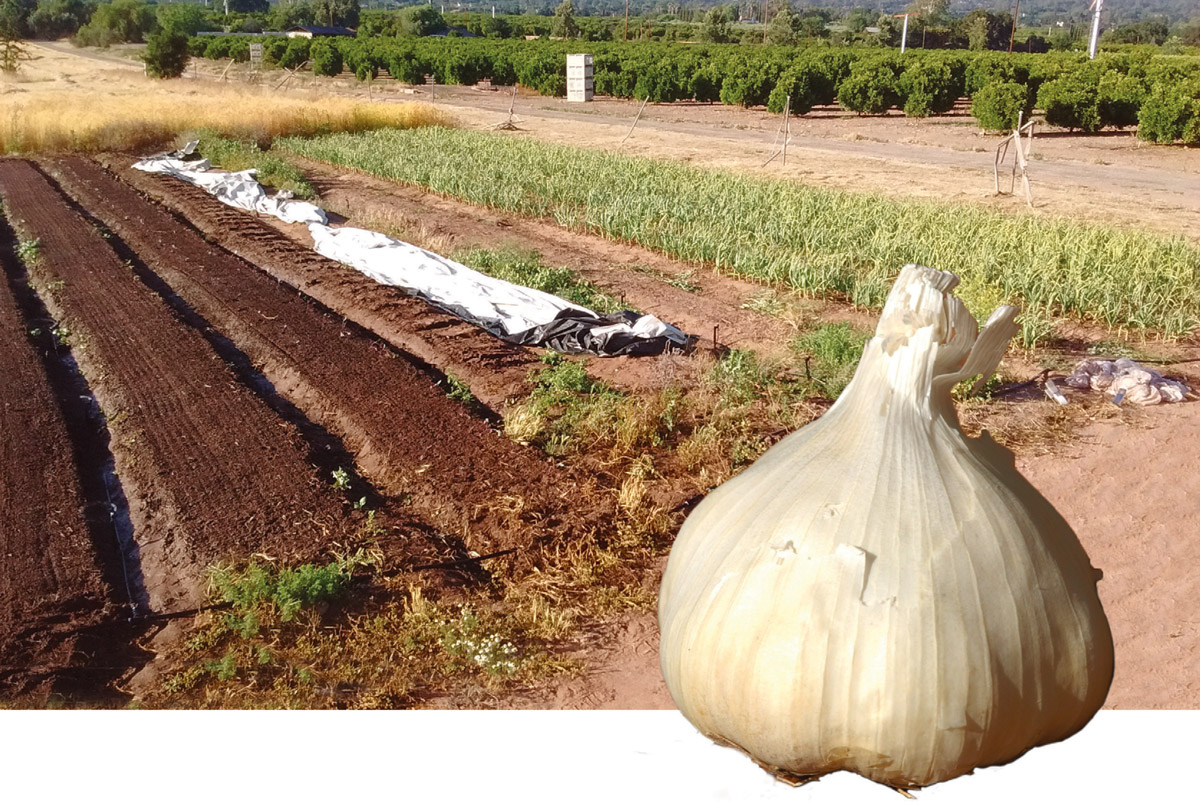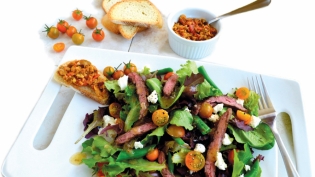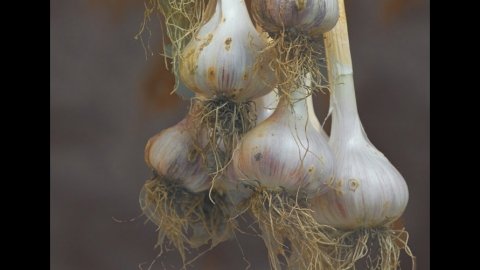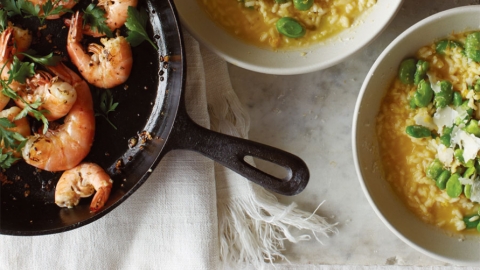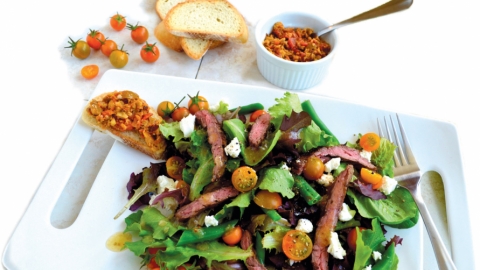Garlic: The Stinking Rose
Are you ready to tiptoe into edible landscaping? Let me introduce you to garlic.
With minimal fuss and many rewards, Allium sativum (garlic) is a great crop to interplant in any home garden. Affectionately called the stinking rose, it is in fact a member of the lily family. If you have ever grown lilies, tulips or irises then you can grow garlic.
In cultivation, garlic plants offer a perfectly balanced sheath of flat gray-green leaves. The long, smooth blades emerge from the center as each layer of new growth takes turns alternating halfway around the stem from the prior leaf. The entire ensemble rises one to three feet above the soil in a calculated manner.
You could say that garlic is the ultimate “slow food” in the garden. Patience is rewarded as this pungent plant provides natural pest protection and fungicide. Even for fastidious folks, garlic easily supports both aesthetic and functional needs. Help this champion companion crop achieve its full neighborly potential by adding it everywhere, including containers.
Sourcing
It’s easy to get ahold of garlic for planting: Simply buy an organic bulb at the grocery store or direct from local growers at farmers’ markets. (Conventional garlic may have been sprayed with a chemical growth inhibitor.) You can also purchase garlic through online retailers. If you go this route, I’d suggest checking out Seed Savers Exchange (SeedSavers.org), a nonprofit that offers organically certified heirloom seeds.
Planting
Growing garlic can be a life-long experience, passed on as a family tradition. Like elsewhere in the northern hemisphere, Southern Californians plant in early autumn for a bountiful late-spring crop.
Garlic is vegetatively propagated from individual cloves. Each bulb is a genetically identical plant waiting for the right conditions to grow. The scabby end is the base where the roots will grow and the leaves emerge from the pointy end.
Plant the pointy end up with papery husks attached. Firmly pack soil over cloves and gently mulch with clean straw or leaves before watering well.
Garlic responds to temperature and day length for proper bulb formation. Full sun is essential. To achieve big bulbs while underground, weed regularly and add phosphorus and potassium. Use a liquid fish fertilizer to start and seaweed emulsion mid-season.
The list of companion plants for garlic far outweighs its enemies. Beneficial relationships include dill, beets, kale, spinach, potatoes, carrots, eggplants, tomatoes, peppers, cabbage, cauliflower, broccoli and kohlrabi. Experiment with growing rue, chamomile, yarrow and summer savory to boost garlic growth. The main “enemies” to keep garlic away from are asparagus, peas, beans, sage, celery and parsley.
Growing
Garlic has shallow roots, often less than two feet deep. Overhead irrigation can be used to start, but drip irrigation works fi ne as well. Once the crop is established, it benefits the growing crop to switch to deep-surface watering using drip tape or a soaker hose, or furrows to keep the area evenly watered. Soil-borne diseases, weed management and overwatering are the top concerns. White rot, rust and root maggots can quickly sabotage crops.
Give your soil at least three years to rest before growing any alliums in the same location. Overall, the hardest part is picking a spot in your garden that supports shutting off the irrigation entirely for the final three weeks pre-harvest.
Harvesting and Storing
Harvesting happens in May and June. There are two distinct ways to know when to harvest: For hardneck varieties, look for the oldest leaves to begin yellowing; with softneck varieties the tops will fall over naturally. Harvest by gently lifting with a fork or hand shovel.
Brush off the soil gently. Do not wash. Cure in a single well-ventilated layer for two weeks at 80° until the skin is dry and the necks are tight.
To grow your garlic next year, keep heads intact until planting. Store in a cool (40°), dry, dark location. Choose the best-looking heads with no signs of soft spots, decay or disease as your future seed stock. Eat the rest.
While savoring the flavor, envision how big your bulbs will be next season.
GARLIC GARDENERS’ CHECKLIST
Sow: September 15–October 31
Harvest: May 1–June 30
Planting Depth: 2 to 4 inches
Spacing: 6 to 8 inches
Mulch: 4 inches (optional, but may help in home gardens)


